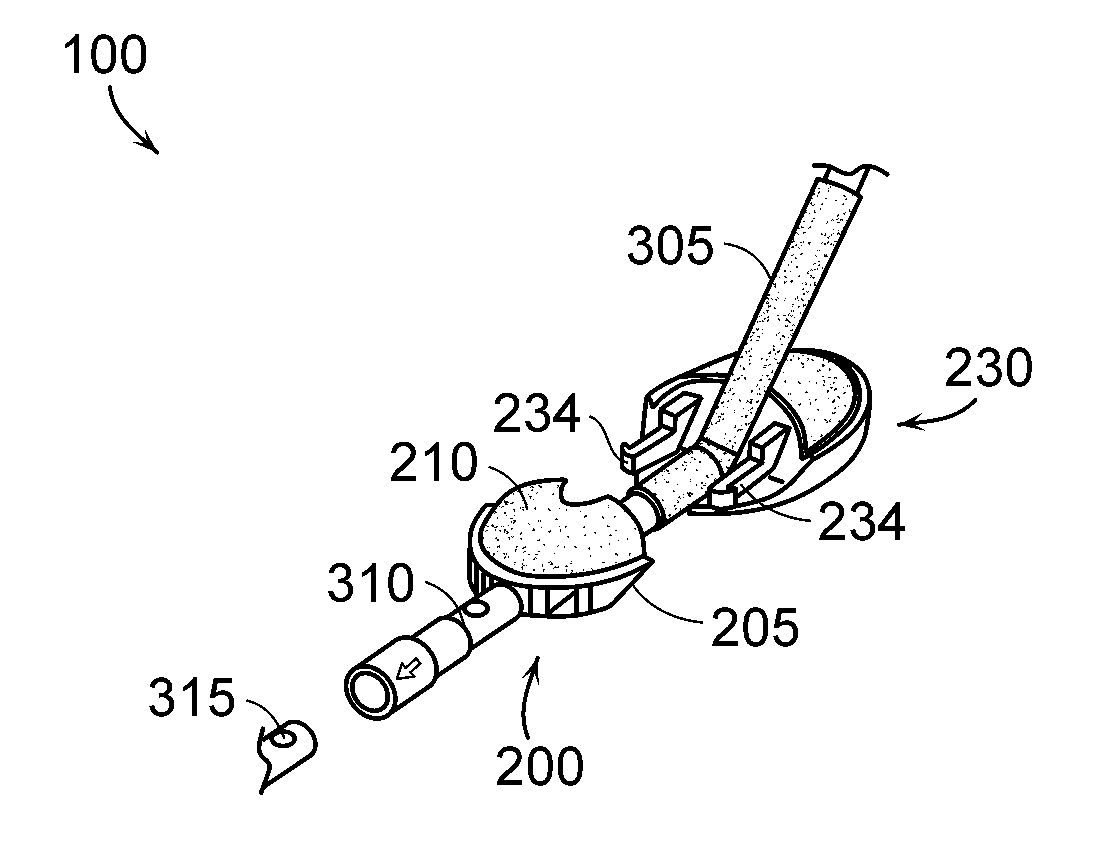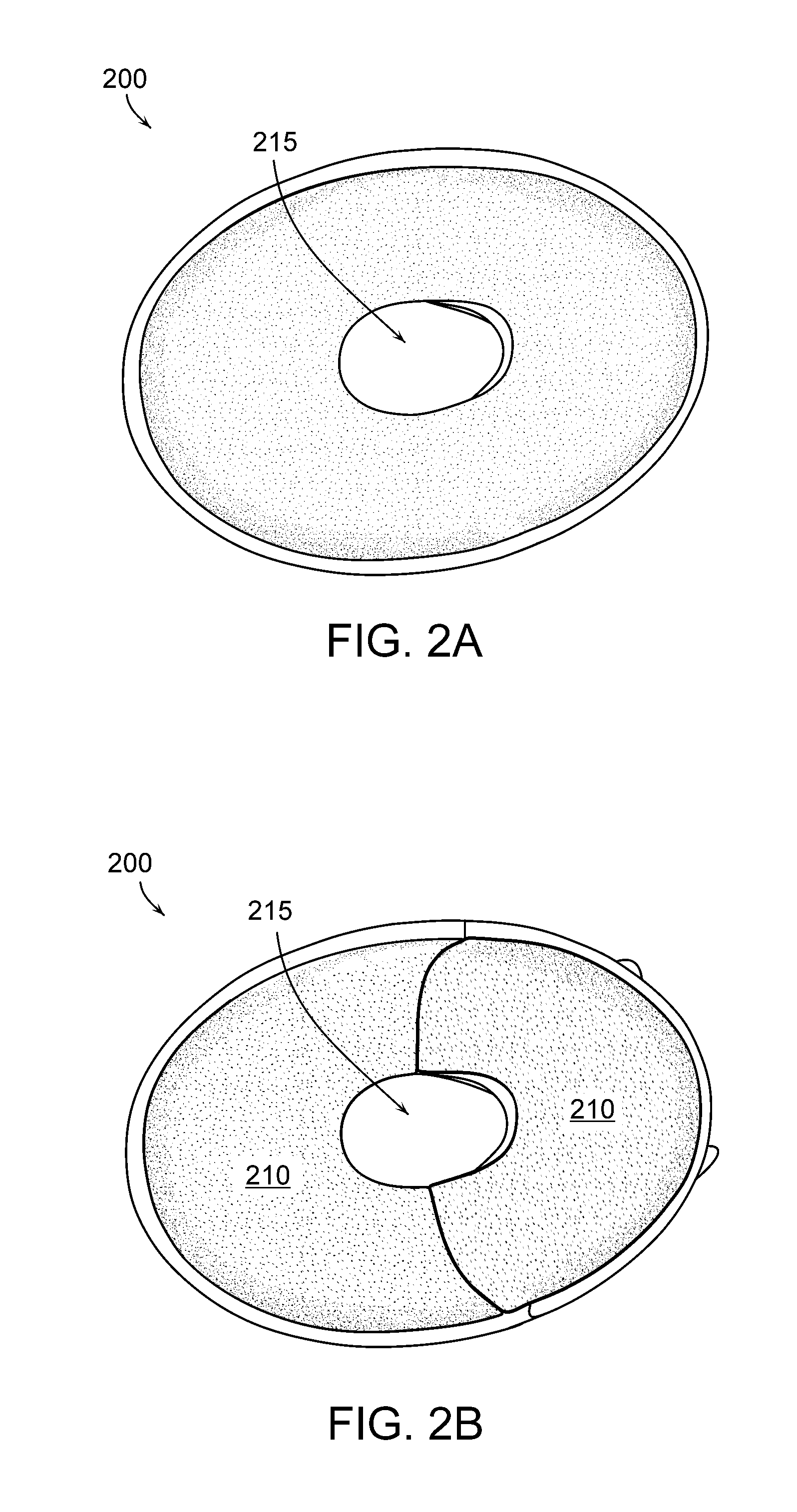Modular implantable medical device
a medical device and module technology, applied in the field of medical devices, can solve the problems of high morbidity rate, high procedural cost, and high morbidity rate, and achieve the effects of reducing the risk of thrombosis
- Summary
- Abstract
- Description
- Claims
- Application Information
AI Technical Summary
Benefits of technology
Problems solved by technology
Method used
Image
Examples
Embodiment Construction
[0031]The present invention provides a medical device that is capable of implantation within a patient for long-term treatments. The device of the present invention includes a base that functions as an implanted medical port capable of receiving, routing, and anchoring a treatment component, such as for example a fluid conduit, power cable or fiber optic cable, that extends through the patient's skin into the patient's internal physiology. The port is shaped to maximize comfort and ease of installation, and thus a relatively flat and generally rectangular geometry is most preferable for a variety of applications. The device of the present invention is adapted to support, direct, and anchor the treatment component such that no fluid or energy connections are required between the port and the treatment component to provide diagnostic or interventional treatments. Thus, fluid or energy in the form of light, heat, microwaves, and radio frequency (RF) transmissions, for example, can be t...
PUM
 Login to View More
Login to View More Abstract
Description
Claims
Application Information
 Login to View More
Login to View More - R&D
- Intellectual Property
- Life Sciences
- Materials
- Tech Scout
- Unparalleled Data Quality
- Higher Quality Content
- 60% Fewer Hallucinations
Browse by: Latest US Patents, China's latest patents, Technical Efficacy Thesaurus, Application Domain, Technology Topic, Popular Technical Reports.
© 2025 PatSnap. All rights reserved.Legal|Privacy policy|Modern Slavery Act Transparency Statement|Sitemap|About US| Contact US: help@patsnap.com



